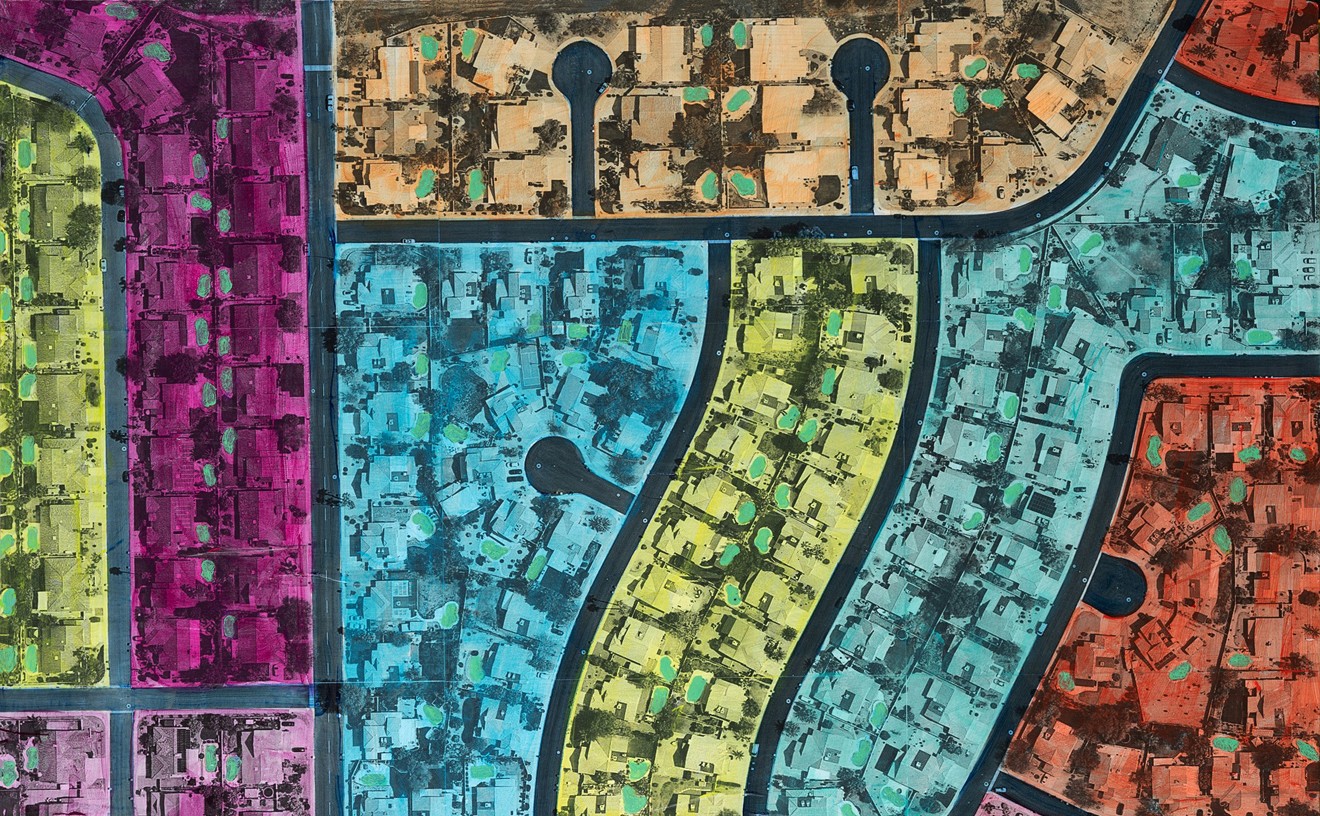Local arts advocates are fuming because Governor Doug Ducey's proposed executive budget for the 2017 fiscal year doesn't include a $2 million allocation requested by Arizona Commission on the Arts, a state agency charged with stimulating the arts, fostering public participation in the arts, and encouraging an appreciation for the state's cultural resources. But they're also taking action.
Before the final state budget gets approved and signed into law, it needs to pass through the Arizona Legislature. Key players in the Arizona arts community, including Bob Booker, executive director for Arizona Commission on the Arts, had hoped to resolve the issue by working with members of the Arizona Legislature who support arts funding.
As of Friday afternoon, April 29, the Arizona House of Representatives was still considering possible amendments to the budget. Any day now, a final budget could be sent to Ducey for his approval. That's why advocates kicked it into high gear last week.
On Monday, April 25, Arizona Citizens for the Arts launched a very specific grassroots campaign, targeted at securing the $2 million in funding for Arizona Commission on the Arts. By Friday morning, April 29, they’d engaged nearly 1,000 people in sending notes to Arizona’s political leaders, says Rusty Foley, executive director of the statewide arts advocacy organization that promotes arts-friendly public policies at the local, state, and federal levels.
Arizona Commission on the Arts is a state agency created in 1966 through an executive order issued by Governor Samuel Pearson Goddard, then written into Arizona Revised Statutes by the Arizona Legislature the following year.
The commission's work includes “providing leadership, programs, services, and grants to support the availability and sustainability of arts/culture and arts-education programs,” according to its current five-year strategic plan.
And doing all that work takes money.
Arizona Commission on the Arts has several funding streams, including the National Endowment for the Arts, the Arts Trust Fund, and various public and private sources. The Arts Trust Fund, comprising a small percentage of fees paid for Arizona Corporation Commission filings, was established by Governor Rose Mofford and the Arizona Legislature in 1989 as a supplemental funding source for the arts.
For a time, it was funded in part by a private/public ArtShare endowment, established in 1996 with $20 million. At its peak, accrued interest provided more than $1 million a year to the Arizona Commission on the Arts budget. But that fund no longer exists, because the state used it to balance the overall budget between 2009 and 2011.
From 1970 through 2011, it received money from the Arizona Legislature through the state's general fund. The amount varied from year to year, but at one point it reached $2.1 million. But the agency hasn't received money from the general fund since 2011. During fiscal years 2014 and 2015, they got $1 million from the state's Rainy Day Fund. But that hasn't happened since.
It's too soon to say what specific programs would be affected if the $2 million requested by Arizona Commission on the Arts doesn't come through for fiscal year 2017, which begins July 1 of this year and ends on June 30, 2017. But clearly having less funding will necessitate doing less, as it has in years past. Before recent funding cuts, the agency kept an artist roster that helped artists connect with schools and potential collaborators. But now that roster is defunct.
Offerings already cut due to decreased state funding include the Art Tank grant program, which invited artists to pitch cool projects and collaborations to live audiences in several Arizona cities. Audience members got to vote for which projects got funded — which led to some really interesting works by groups including Orange Theatre, ProMusica Arizona, and Teatro Bravo.
Through the years, Arizona Commission on the Arts funding has helped to fuel not only the growth of major arts organizations such as Heard Museum, Ballet Arizona, Arizona Opera, Phoenix Art Museum, and the Phoenix Symphony. It's also funded new arts initiatives and creative collaborations like those presented through [nueBOX], which included the creation of a new CONDER/dance work called "Walking on Broken Glass," which featured a film by Perry Allen.
Arizona Commission on the Arts has provided research grants that have enhanced the work of several well-known metro Phoenix artists, including ceramicist Patricia Sannit, multi-media artist Cristobal Martinez, and photographer David Emitt Adams. And it's created grant programs for arts learning, festivals, and professional development, to name just a few.
For now, it's a matter of watching and waiting.
Booker isn’t the only person keeping a close eye on Arizona government during the budget negotiations process. Foley is watching, too.
And they’ve been talking with individuals involved with the legislative process, including two especially arts-friendly legislators – Senator Bob Worsley of Mesa, a Republican representing District 25, and Representative Kate Brophy McGee of Phoenix, a Republican representing District 28.
“Some will never, ever support you,” Foley says of Arizona legislators and the issue of arts funding. Others are supportive of the arts, she says, but they tend to think that situational factors (such as the state’s current budget deficit) make this a tough time to invest in the arts.
The challenges haven’t stopped Foley from helping to lead the charge, and using a variety of approaches.
“We share economic impact information with legislators,” Foley says. “For a lot of them, it’s what makes a difference.” According to the Arizona Citizens for the Arts website, nonprofit arts organizations “represent more than a half-billion dollars of economic activity in communities across Arizona.” But just sharing data isn’t enough, Foley says.
The personal touch counts, too. And there’s plenty that individual artists and art supporters can do – including inviting their legislators to come out and see a performance, and participating in grassroots campaigns like the one that’s been underway for a week now.
Even busy artists should be making time to get involved, Foley says.
“If you are an artist or arts supporter, its part of your civic responsibility,” she says. “If you’re not willing to stand up for what you care about, others will control the agenda.”
[
{
"name": "Air - MediumRectangle - Inline Content - Mobile Display Size",
"component": "18478561",
"insertPoint": "2",
"requiredCountToDisplay": "2"
},{
"name": "Editor Picks",
"component": "16759093",
"insertPoint": "4",
"requiredCountToDisplay": "1"
},{
"name": "Inline Links",
"component": "17980324",
"insertPoint": "8th",
"startingPoint": 8,
"requiredCountToDisplay": "7",
"maxInsertions": 25
},{
"name": "Air - MediumRectangle - Combo - Inline Content",
"component": "16759092",
"insertPoint": "8th",
"startingPoint": 8,
"requiredCountToDisplay": "7",
"maxInsertions": 25
},{
"name": "Inline Links",
"component": "17980324",
"insertPoint": "8th",
"startingPoint": 12,
"requiredCountToDisplay": "11",
"maxInsertions": 24
},{
"name": "Air - Leaderboard Tower - Combo - Inline Content",
"component": "16759094",
"insertPoint": "8th",
"startingPoint": 12,
"requiredCountToDisplay": "11",
"maxInsertions": 24
}
]











